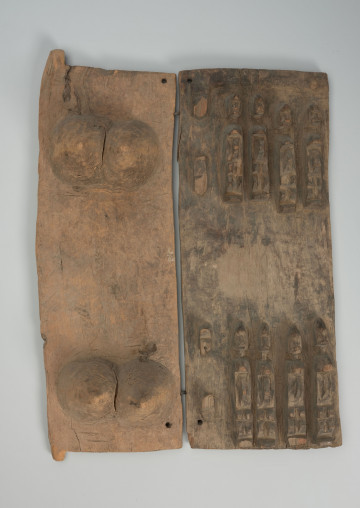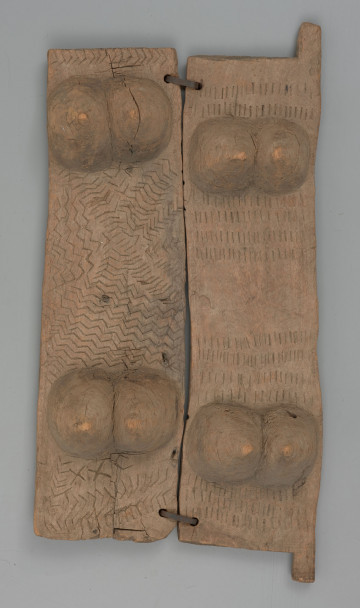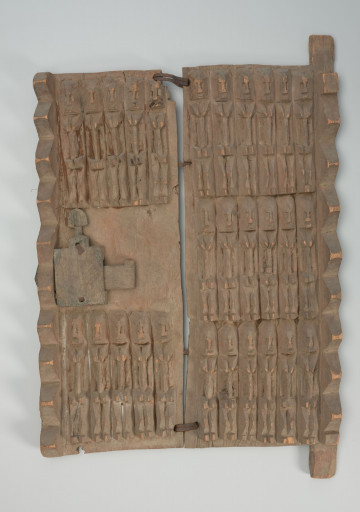
Granary door
między 1970 — 1980
National Museum in Szczecin
Part of the collection: Collection of Dogonian art
Granaries (guyon, singular: guyo) are an indicator of wealth and family size. The greater their number, the more numerous and richer the family. Usually each of the adult inhabitants of a homestead has his own granary. Those belonging to men are called guyo-ana, and those assigned to women - guyo-ya. They store in them all personal trinkets apart from agricultural produce. The patriarch of the ginna bana family owns the largest number of granaries; he is responsible for the whole family and must have room to store the harvest of sometimes three seasons. He must be prepared and in the event of misfortune, e.g. a drought or a period of shortage, he must have enough supplies to save his family from starvation. The granary is compared by many Dogon to Sirius B (Po Tolo, or the fonio star), a white dwarf moving around Sirius A. Their mythology often refers to a flying granary which resembled a square piece of sky.The doors were made of three planks connected with iron clamps. They are covered with bas-relief patterns, among which one can recognise representations of ancestors, snakes that symbolise the rebirth of deceased ancestors, and images of kanaga and hare masks. Among the motifs decorating the doors, one can also distinguish bilu ladders. These are portable stairs made from a single tree trunk, used to climb up to the terrace of a house, and high granaries. Miniatures of these staircases are important equipment for altar wagem. The doors are equipped with a lock ta koguru, which means attached to the door, and a hinge system called a pole with two pivots: upper and lower. They are always mounted in a wooden frame.
Ewa Prądzyńska
Author / creator
Dimensions
cały obiekt: height: 36,2 cm, width: 30 cm
Object type
farm building
Creation time / dating
Creation / finding place
Identification number
Location / status

między 1970 — 1980
National Museum in Szczecin

między 1970 — 1980
National Museum in Szczecin

między 1951 — 1984
National Museum in Szczecin
DISCOVER this TOPIC
National Museum in Szczecin
DISCOVER this PATH
Educational path